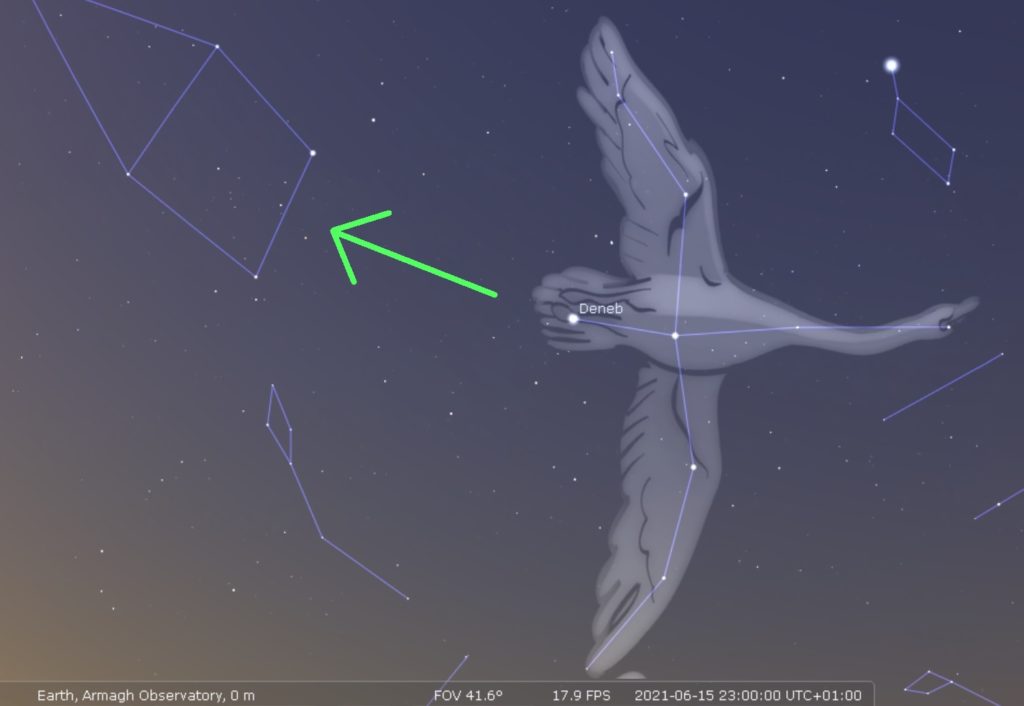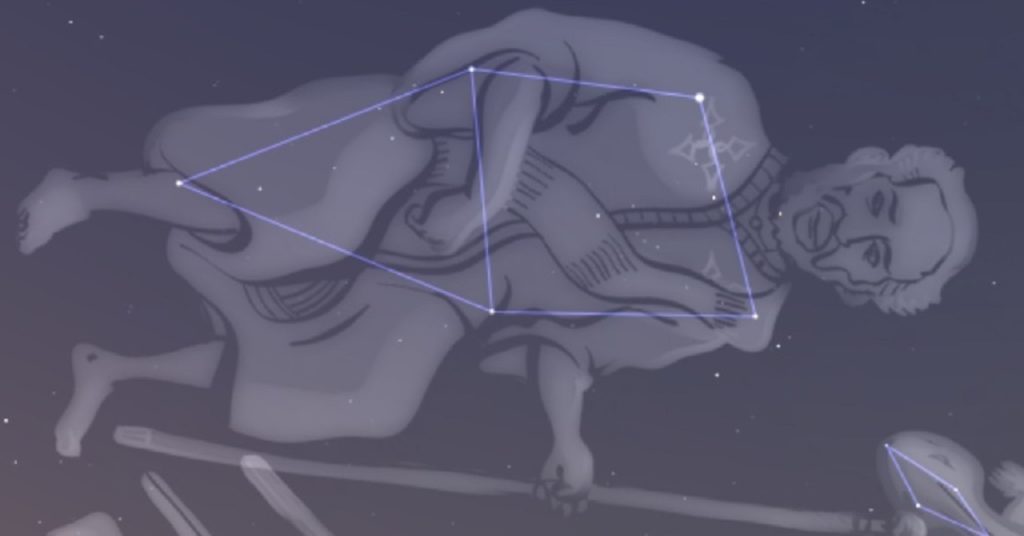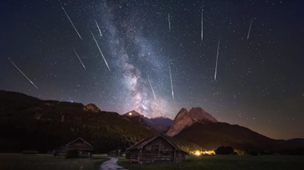Welcome stargazers! This is an interesting time of year for those of us in the Northern hemisphere, because despite the shorter evenings, we have some more unusual celestial objects with which to satisfy our cosmic observational appetite! So close those house blinds, avoid any nearby street lights and if you have an optical aid – keep it close to hand, as we are now going to explore the June night sky…
The good news is that even if you don’t have an optical aid, as your eyes adapt to the dark you’ll gradually be able to observe more sights in the heavens, even if our observing vigil needs to commence at a later hour.

As we look to the East at 11 pm (or to be exact ENE) and look up, a star that is will be easy to spot is called Deneb. Deneb is a particularly bright star, one of the few to really stand out, even against the brighter backdrop of the summer night sky. In fact, it’s so bright, that as a first magnitude star, we can spot it before the sky is ‘fully’ dark at this time of year. It is a blue-white supergiant, with 20 times more ‘star stuff’ inside it than the Sun, and with it measuring some 278 million kilometres across we could fit the star of our solar system into its diameter 200 times – (which is really saying something when we consider that the Sun is already 1 million times larger than the Earth)! Deneb means “tail” in Arabic, so we should not be surprised to learn that this star marks the tail of the constellation of Cygnus the swan. It’s a good thing perhaps that this enormous, hot and beautiful star is so far away (almost 25 quadrillion km) from Earth, as at 200 000 times the brightness or luminosity of the Sun, we would surely be dazzled if it were closer! After becoming a red giant this massive star is expected to eventually end its life in a spectacular supernova in several million years’ time.

To draw the shape of the swan with the aid of your mind’s eye in the night sky, firstly draw the asterism (simple shape) of a cross that has fallen over to the left, playing dot-to-dot, using 6 stars. Deneb marks the ‘top’ of this fallen cross, more commonly referred to as the Northern Cross. Extend the cross-beam of your cross with 2 extra stars either side, recognize the long part of your cross as the bird’s outstretched neck and – Hey Presto – you have your swan! Not only will Deneb serve us a useful marker in the sky for you to identify the swan throughout the brighter summer months, but this constellation is one of the few star patterns which does actually look like what it supposed to represent, so one genuinely worth spotting!

Although we can’t see them with the naked eye (as they do not emit any light from the visible portion of the electromagnetic spectrum)- its adds a little spice to our observation of the Cygnus constellation to know that a galactic X-Ray source, the first recognised as a ‘Black Hole’ resides in this patch of sky! It is aptly named Cygnus X-1 and is located close to the star marking the base of the swan’s throat.

Although we can’t see the mysterious object itself, we can examine the binary system it belongs to by viewing (with a small telescope) its bright blue supergiant companion star, which is just at the edge of the ‘Fish on a Platter’ dark nebula. While observing, it’s fascinating to realise that orbiting this star at only one-fifth of the Earth’s distance to the Sun (0.2 AU), is an ‘invisible cosmic vampire’, a black hole approximately 9 times the Sun’s mass that continuously feeds off the supergiant as it goes!

And now, make sure you’re in suitable attire, as last but not least for this part of the sky we find ourselves on the celestial red carpet, brushing shoulders with royalty! The constellation now about to grace us with his presence is King Cepheus. Husband of the domineering and vain Queen Cassiopeia of Greek mythology, you can look for this constellation to the left of Cygnus by continuing an imaginary line down the neck of the bird and out from its tail to the celestial monarch’s head.

Shaped like a child’s schema of a house (with a triangular roof on top of a square house) and drawn with 5 stars, the star-studded outline of Cepheus will be positioned on its side at 11 pm, having fallen over to the left. Things with the king’s pattern though are a little topsy-turvy, for in illustrations of the constellation the ‘roof of the house’ actually depicts the lower half of his body as he is seated on a throne, and the ground floor square of the house is his upper torso and head!

Alderamin, (or Alpha Cephei) is a second magnitude star and the brightest in this human constellation. Its name means “the right arm” in Arabic and it marks the shoulder of the seated king. The good news is that as a circumpolar constellation (circling around Polaris, the Pole star)- it’s so high in the sky that it never falls below the horizon, so if you wish to better make out its dimmer stars when the sky is darker you can look to the royal once again around 1 am. Thanks to its extreme Northerly position in the heavens, Alderamin has the honour of belonging to an elite group of stars that – due to the Earth’s slight slow ‘wobble’ on its rotational axis (known as precession), will one day take a turn at being seated directly above the Earth’s North pole in Space. So by the year 7500 AD Alderamin will wear the crown of ‘Pole Star’ and all the other stars in the Northern hemisphere will pay their respects by rotating around it!

Finally, while our star-gazing options are somewhat more limited this month, a significant date in the astronomical calendar falls on Monday 21st June (around 4:32 pm in the UK and Ireland), when the Sun will be at its highest point in the sky along the arc that it appears to travel from east to west, each day, all year round. The day of the Summer Solstice is the exact point at which (on its orbital journey around the Sun) the Northern hemisphere will spend the longest continuous time in sunlight. So for those of us in the UK and Ireland the Sun will remain above the horizon longer than on any other day of the year and give us about 10 hours more daylight than on the December Solstice… enjoy!
Article By: Nick Parke, Education Officer



0 Comments